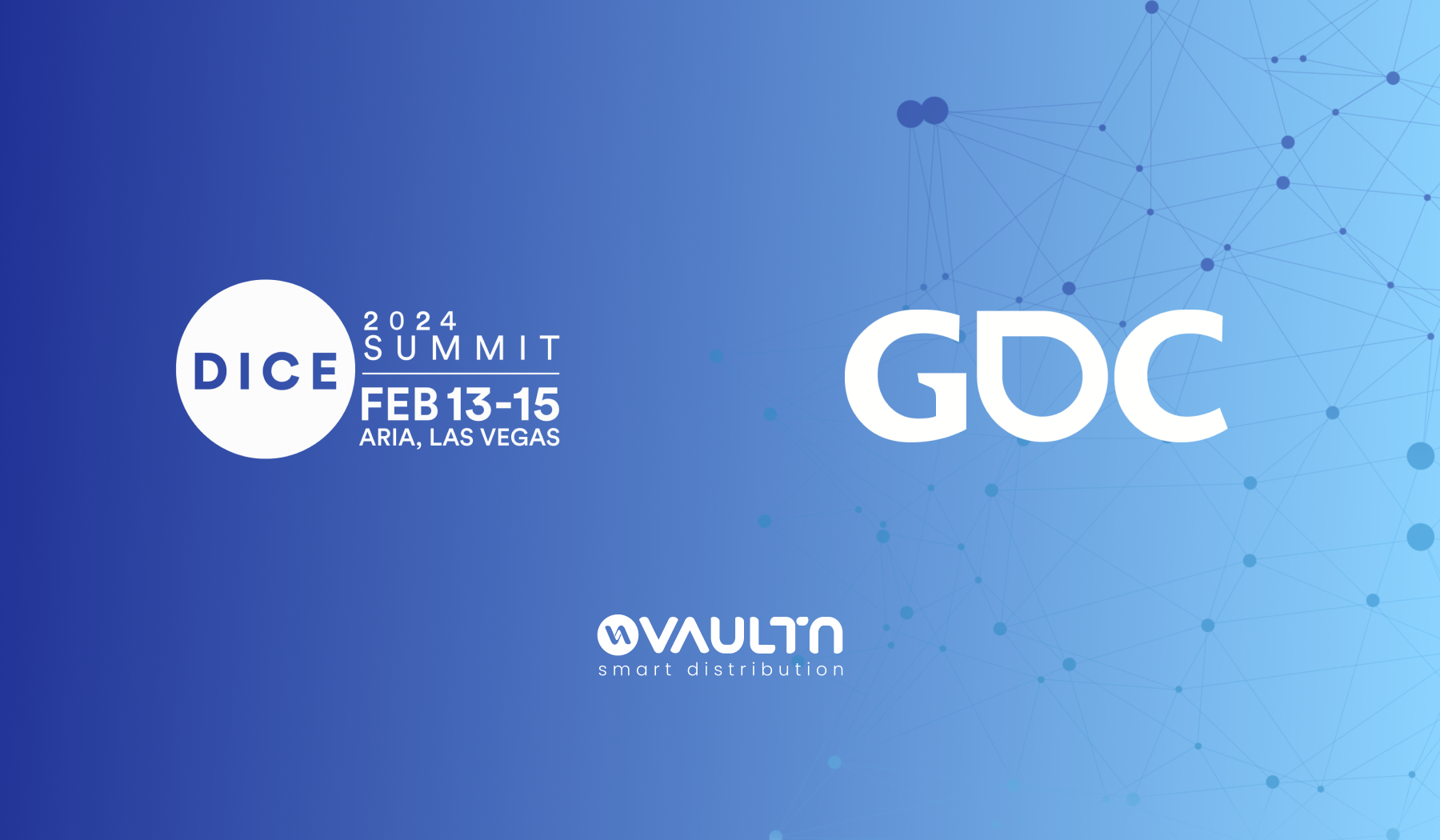So I wanted to share some thoughts to answer this question and why we decided to build and The amount of the questions that getting was so many and so right on many levels, maybe it’s better to put it out there here for curious people and posterity.
Obviously, there are many reasons. Some of them are rooted within the industry level, other lie in the structures of institutions and some of them happen because we are humans, and humans do mistakes.
But let me begin with the basics and some background.
In 2021, while researching academic publishing about digital distributions, I noticed there is a big publication database on physical product supply chains. But there was not a great selection of academicians or students that would focus on the distribution of digital goods. The ones that I came across were mostly on purely technical manner and analyzed possible digital distribution architecture proposals – which, to be frank, were not too exciting given today’s technology standards. But one of them was standing out from them, which was a great work of academics from Dublin Institute of Technology creating a proper research on ‘what is a digital product?’, ‘ what are the problems of IP creators today?’ and what can future bring for the ‘digital product supply chain management?’. In 2009. Yes, in 2009 and I haven’t yet found similar research since then (I covered that publication in an earlier blogpost this summer).
So, let’s answer the first question: What is a digital product?
“In the increasingly digitized software industry supply chain, the flow of material is declining in importance, due to the availability of the Internet as a free distribution medium. Our research has elicited that a digital product can be characterized as a movement of value instead. Thus, key flows represent information, ideas and innovation, from requirements into development, from release through to distribution and finally to the end-consumer. As such, information is shared mainly through electronic means within and outside of an organization.” 1
Until digital goods started appearing in forms of games and software, goods where physical which can be defined as, “they obey physical laws. They possess mass and occupy volume. Over time, they can break down and degrade.” 2, product supply chain management has been known to humanity from the early days of civilization, so we are prepared to tackle this situation. All the checks and balances in place, industries used to know when to act or create control points.
Then software came. We did not take it seriously in the early days but in time software distribution made its crescendo towards taking over the world. Quickly we start seeing people copying the software files many times over. This situation gave way to license keys.
The early license keys developed in 70’s. Since then, we haven’t come so far. We still activate digital products via a license key. But we did not totally know how to track these products and how to create a digital supply chain system for a digital product. Software developers (including game developers) tried to overcome these problems by simply creating their own DRM tools, like Microsoft or Valve (Steam). These platforms are focused on making sure the products are licensed and every user gets one product that is not copiable. But there is one game changer here: If these companies come to a big user amount and don’t let the other companies create their own transactions, they are being sued with monopoly accusations. We are closely seeing these in Apple & Google vs Epic Games and Digital Markets Act (DMA) regulations recently accepted and enforced by EU. At the end these companies must create these license keys and distribute out of their platforms of they are having big problems in institutional level, but they didn’t really focus on how to trace and track these products across the internet.
But why?
It looks complicated but it is simple. In the beginning the biggest problem with license keys was that you could easily break them with some hacker software. I remember the late 90’s and early 2000’s very clearly when I was a full-on gamer in Turkey. I was curious why people pay a lot of money for software or a game. The piracy problem has been mostly choked by the games industry via cloud-based tools because most of the products need server access now to be able to work %100. For example, you need Microsoft 365 to be able to work on documents online with our team or use cloud services or you need multiplayer access to be able to play most of the games in full. Therefore, Cloud authentication choked the pirated license keys problem.
So, what happened and why software and game industries did fall into another trap called grey market. How come they couldn’t identify how big this market is?
Because of the features of a digital product, it’s very easy to move it peer to peer. You don’t even need to send the product itself; you can just send the license key to another person and it’s gone. This is happening in Software and games industry since the early 2000’s. Increasing bandwidths increased the number of people using download copies compared to physical product buyers. Let’s accept that most people don’t want to go to a shop to buy software or games anymore and that we see an evolution in user behavior.
But publishers were having a hard time understanding how big this trend was, leaving physical products in favor of digital in the first 15-16 years. It’s a very interesting story.
Let me make you a calculation. Physical products, because of their nature, have costs entailed to them for distribution. We can list those as shipping, stocking, inventory and distribution related costs. It is the same supply chain model similar to all products in the world, so there was no confusion. Because these costs were entailed, the distributors and retail stores were given a margin calculated with all these costs. When digital products came to the market, publishers realized that there will be no or very small of such costs will apply. Therefore, they wanted to level the field with digital vendors and physical vendors and because of that gave a higher buying price for digital distributors. To give a more solid example, in a release date, FIFA (now FC) football game was distributed to digital vendors from 33 EUR estimated costs price in EU zone, and the same game would be distributed to physical distributors from 23 EUR estimated cost because of the reasons stated above. If you are a Chinese distributor or Polish, you even had cheaper prices.
But they were missing one very simple point. They activation keys distributed to digital stores and printed into booklets from DVD’s were the same platforms activation keys like Steam. So, they were actually the same thing as digital with an addition of a DVD. You can download the game or install it from the DVD; you will use the same license key to activate.
This problem that nobody checked created a huge parallel market starting in Europe and soon taking over globally. Big chunks of the physical games would never ever leave the warehouse to actual stores to be sold but in fact unpacked in warehouses that they have landed and delivered to digital distributors with a big margin. We are talking about saving all the additional costs that were supposed to happen for a digital product (5-10 EUR per pcs).
So why hasn’t this problem got noticed and fixed before?
I think the reasons were institutional and human. We believe most of the big companies with all their money, power, and clever people, are supposed to think about these kinds of problems and solve them with their all-mighty fist and execution. But no, it’s not like that. My experiences showed me years ago that, once you are a big corporation you lose some very important features such as fast execution and problem solving. Because of the hard decision-making processes and bureaucratic natures, big corporates cannot see or solve everything. Due to very lengthy decision-making processes that are primarily intended to reduce responsibilities and the bureaucratic nature, large companies cannot see or solve everything. There mostly is a process for every procedure, a checklist for every process. What could possibly go wrong? All you must do is adhere exactly to the handbook. This makes it much more attractive to carry out what is in the handbook than to follow your own, possibly new ideas and paths or question weaknesses within the system. In those environments, creativity harbours high risks.
The second part is the people part, people used these sales channels to manipulate the sale numbers. I remember when of the biggest TripleA Publisher stopped selling digital keys to the market, their sales dropped so much that they had to push some DVDs to the market to balance out their sales figures. At the end these are publicly listed companies, and they don’t want to declare shrinking sales to their partners.
So, think about yourself as the CEO of a big gaming company, the sales numbers are being presented to you channel by channel. What you see would be probably like this on PC sales. Steam 70-75%, physical 20-25%, digital sales 1-5 %. These numbers were also part of the problem because you think 20-25% of the sales coming from physical but in the end, 80-90 % of them would end up in digital but you wouldn’t even recognize. 15-30 % of all sales go digital but on your books. It looks so small, you are not driven to find a solution to the problem.
That’s why, since physical products have slowly gone out of the market in the last 5 years, we started seeing digital sales in their real numbers. 15-30% of the sales are happening in the area where publishers cannot even have visibility or control. With the consequences: Huge revenue erosion and unauthorized reselling. Nobody can control this market without a new approach. Venture capital company Bitkraft said in a blog article published together with consulting firm Naavik, their calculation of grey market is 11.5 Bn USD.3 Add gift cards – who has pretty much same supply chain ops – with twice the market size. Software? It’s even hard to predict but given that the market is way bigger both combined, the problem is huge. Way bigger than anyone anticipated.
Additionally, having no control over digital product distribution would bring ever bigger challenges for IP creators to come. Every day more and more products are turning digital, NFT’s were the last ones on the shuttle. What about mobility, digital ads, more mediums that will be created in the future?
We need to change this business processes for the better.
We are determined to do that in VAULTN.
Peace & Love
Emrah Kara
(CEO & Founder)
- Ryan, C., Wagner, C., Sweeney, E., Esposito, E., Evangelista, P.: Digital supply chains: towards a framework
for software distribution. Supply Management -Towards an Academic Discipline, Proceedings of the 18th
International Purchasing and Supply Education and Research Association (IPSERA) Conference, OestrichWinkel, Germany, April 2009., ↩︎ - Ryan, C., Wagner, C., Sweeney, E., Esposito, E., Evangelista, P.: Digital supply chains: towards a framework
for software distribution. Supply Management -Towards an Academic Discipline, Proceedings of the 18th
International Purchasing and Supply Education and Research Association (IPSERA) Conference, OestrichWinkel, Germany, April 2009., ↩︎ - Dion, M., Stone J., Kumar A.: Gaming Industry Nearly Twice as Large as Reported, at $336B. https://naavik.co/deep-dives/market-sizing/, September 2021 ↩︎











